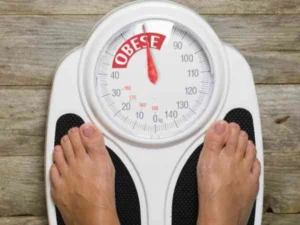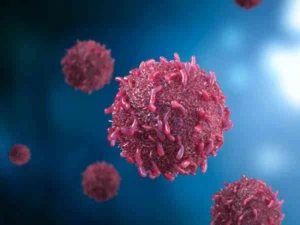Some people often complain that they are having upper back discomfort. This discomfort is felt between the neck and the rib cage. The upper back bones’ role is to support your back. Let us inform you that there are several causes of upper back discomfort.
Pain may be felt as a result of muscular pressure caused by an injury or accident. Pain in the upper back can also be caused by poor body posture. Bone fractures and arthritis can also cause pain. Other symptoms seen in addition to upper back discomfort include muscular weakness and edema.
There may also be other underlying causes of upper back pain that may be hereditary or develop suddenly or over time. In this Blog, we will explore everything about upper back pain in women.
Understanding Upper Back Pain in Women

Upper back pain can be defined as discomfort in the area between the neck and the midback that radiates to the shoulders. Upper back and shoulder aches on the upper right side of the neck can be caused by poor posture and an unpleasant sleeping position.
An injury or herniated disc might also produce sudden upper back discomfort. Other underlying reasons for upper back pain may be genetic, arise unexpectedly, or evolve over time. Upper back discomfort may not necessitate treatment and may resolve on its own. In the event of an accident or other significant ailment thorough diagnosis and treatment may be necessary.
Is Upper Back Pain a Common Medical Condition?
If you spend any amount of time slumped over a computer or phone, you’ve probably experienced upper back discomfort. Even as an athlete, the risk of injury in the thoracic area, or upper section of the spine, is significant. However, upper left-side back pain is less common than lower back pain or neck pain. The back is a very essential aspect of the human body since we utilize it for practically everything. However, it is also an extremely fragile region of the body.
Upper left back discomfort is tough and inconvenient to manage. It may be both annoying and perplexing, particularly if the reason is unclear. Upper back discomfort is especially important since it works with your ribs to keep your body steady and key organs like your heart and lungs protected. Pain in the upper back is frequently the underlying cause of anything serious in the body’s key organs. Something that appears to be a minor ache might become a health risk if not treated properly.
Back Structure
Your upper and middle back include 12 vertebrae. A doctor may refer to them as T1 through T12. T is an abbreviation for “thoracic. Spongy discs are located between the vertebrae. Consider them to be shock absorbers for your body. When you move around, they cushion the bones.
The spine is held together by ligaments and muscles. The thoracic spine refers to the whole region. It collaborates with your ribs to keep your body steady and important organs like your heart and lungs safe.
Causes Behind Upper Back Pain in Women

There are several causes of upper back discomfort as well as the reasons behind chronic upper back pain Please tell us about some of the most typical reasons for this discomfort:
- Strains and Sprains: Strains and sprains are the most prevalent causes of upper back discomfort. Lifting a big object, or lifting it improperly, can cause muscular, tendon, and ligament damage, resulting in upper back discomfort.
- Poor Posture: Many persons who suffer from upper back discomfort are unable to stand straight. The individual may stand crooked or lean over, with the torso leaning to one side rather than being straight with the spine.
- Disc Problem: The disc may shift from its position in the spine or become bloated, placing pressure on the nerves. The disc might potentially tear, resulting in a herniated disc.
- Fracture: In a condition such as a vehicle collision, the spinal cord can break, causing discomfort in the upper back.
When Should I Be Concerned About Upper Back Pain in Women?

In minor circumstances, such as straining a muscle or having a stressful week, upper back discomfort might be a temporary condition. When upper back discomfort lasts more than a week and chronic pain symptoms appear, you should see your doctor.
Other indications that you should seek medical attention include:
- Arm, leg, or buttock numbness or weakness
- Home treatment (over-the-counter pain medications, administering heat or ice) is useless.
- The pain lasts for more than a week.
- Pain restricts activity or disrupts sleep.
- The pain is excruciating.
- Having trouble breathing
How Do You Manage Or Treat Upper Back Pain?

The reasons and symptoms of your pain will determine your therapy. Upper back discomfort that is mild to severe may typically be managed at home. You can attempt to manage your symptoms by using:
Acetaminophen and nonsteroidal anti-inflammatory medicines (NSAIDs) are examples of over-the-counter pain relievers.
- Heating pad for pain and stiffness relief.
- Use an ice pack to relieve discomfort and swelling.
- Massage therapy for medical purposes.
- Getting enough rest.
Risk Factors Of Upper Back Pain in Women?

While upper back discomfort is frequently caused by acute trauma or repetitive motion damage, several variables make you more vulnerable:
- Smoking: It reduces blood flow to the spine. If you sustain a back injury while smoking, the pain will be more acute and tougher to treat.
- Excess Body Weight: It can put a strain on the spine, causing stiffness later in life.
- Inactivity: This can weaken the muscle over time and create acute discomfort in the core muscles.
Conclusion
Upper back pain in women can be defined as discomfort in the area between the neck and the midback that radiates to the shoulders. Upper back and shoulder aches on the upper right side of the neck can be caused by poor posture and an unpleasant sleeping position.
Upper back discomfort affects the upper and middle regions of the thoracic spine. This region extends from the base of your neck to the base of your rib cage.
Upper back discomfort can be caused by a variety of factors, including trauma, poor body mechanics, and degenerative spine illnesses. The majority of minor cases may be managed at home and resolved without additional treatment. Upper back discomfort caused by more serious disorders might continue for weeks or months. Upper back discomfort can occasionally be an indication of a more serious ailment, such as a heart attack.





